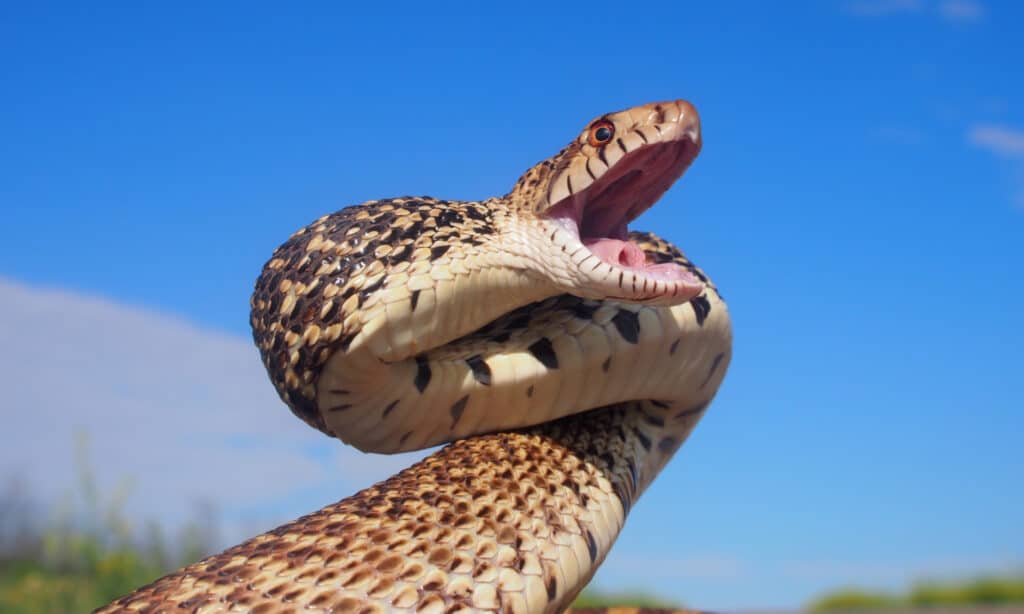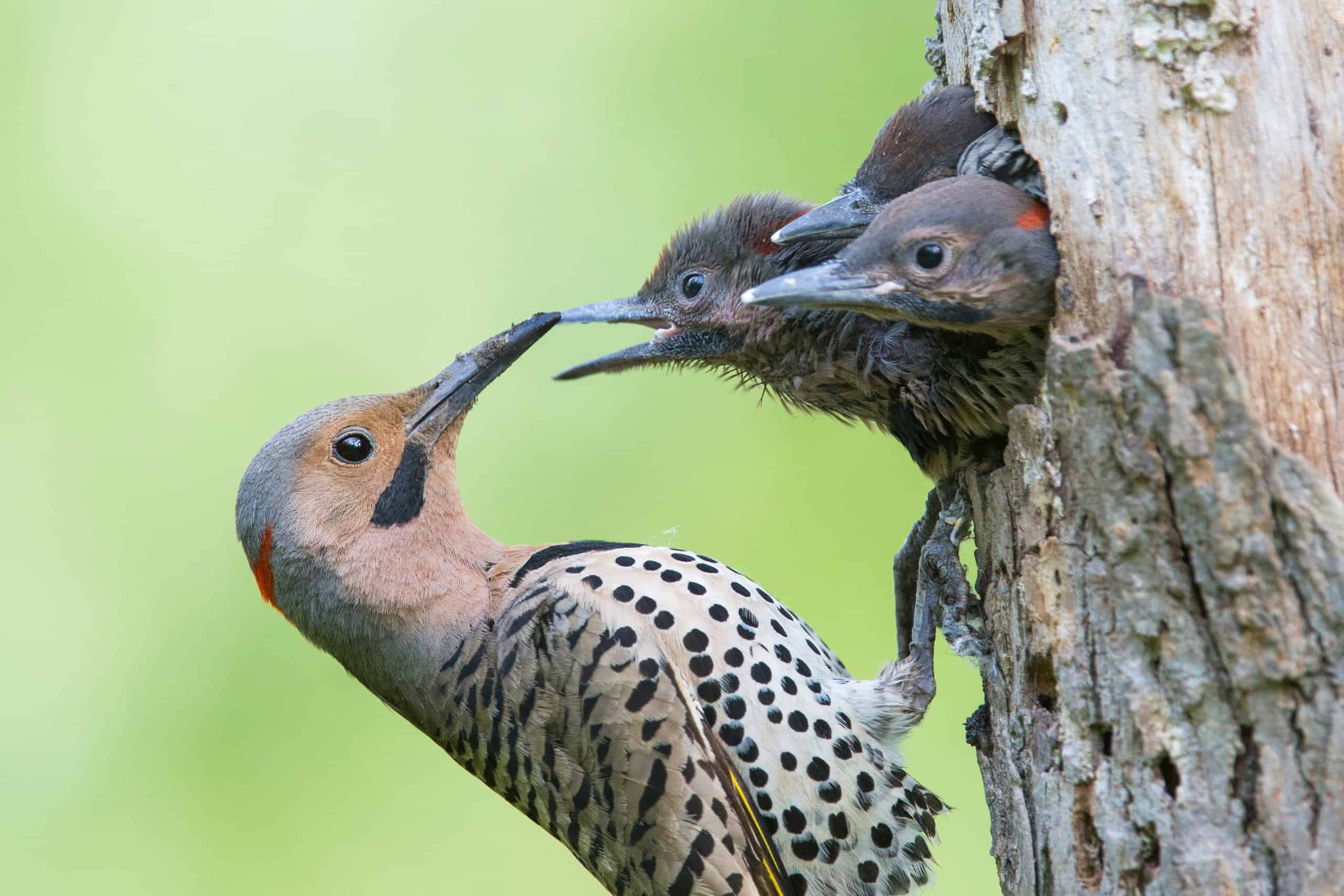This northern flicker did not want to see this when it returned to its nest. The bird lands on a tree trunk right next to the hollow where it has nested and finds a head poking out! This head does not belong to one of its chicks – it belongs to a giant bullsnake. The sneaky reptile has been raiding the nest, looking for a snack. The furious bird pecks at the snake’s head and somehow manages to drag its entire body out of the hole. The two animals plummet to the ground, locked in a fierce battle. We learn from the video notes that the northern flicker survived the encounter, but we do not know what happened to the snake!
Watch the Furious Battle Now
Where Do Northern Flicker Woodpeckers Normally Live?
The northern flicker, Colaptes auratus, is a type of woodpecker and a resident species of the US. There are non-breeding populations further south, inhabiting the central states throughout the year. Some travel to the northern states for breeding. They are relatively large birds with a slim, rounded head. Their bill is slightly curved downwards, and they have a long, flared tail.
You are most likely to find them in an open habitat near trees. They are often seen in woodlands and at the edges of yards and parks. You may find them in the west of the US in mountain forests up to the tree line. Because they are woodpeckers, you would expect to see them in trees! However, you are also likely to scare one of these birds on the ground because this is where they spend a lot of time looking for ants and beetles. As you can see in this clip, they nest in tree cavities.
What Do Bullsnakes Normally Eat?

Bullsnakes are great climbers and often raid bird’s nests.
©Markparker1983/Shutterstock.com
Bull snakes (Pituophis catenifer sayi) are members of the Colubridae family of snakes. They lead a solitary life apart from during the mating season and are mainly active during the day, particularly in the early morning and late evening. They are one of the largest snakes found in North America.
Bullsnakes get their name from the snorting sound that they sometimes make, which sounds a bit like a bull! They live in grasslands, farms, and open areas and can grow as large as 8 feet. These are not venomous snakes, but they do have a nasty bite. They are also excellent climbers and can often be seen raiding nests for eggs and baby birds – precisely what we see in this clip!
Thank you for reading! Have some feedback for us? Contact the AZ Animals editorial team.








